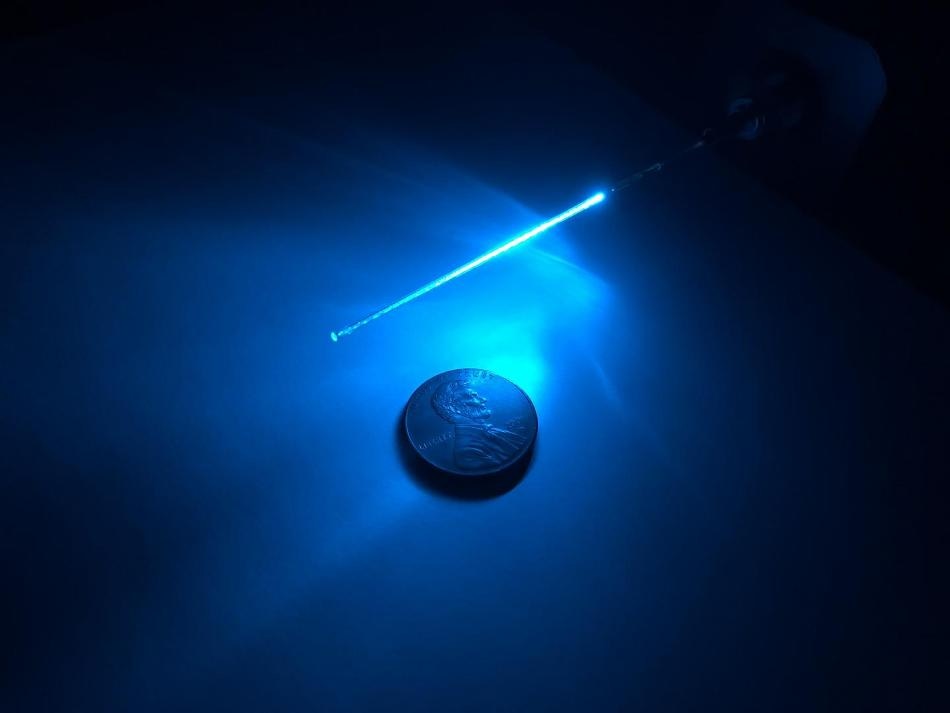Aug 27 2018
A particular wavelength of ultraviolet (UV) light, currently supplied via light-diffusing optical fibers, is extremely effective at destroying drug-resistant bacteria in cell cultures, according to a new research led by David J. Brenner, PhD, a professor of radiation biophysics at Columbia University Vagelos College of Physicians and Surgeons. The technology is engineered to prevent infections around skin-penetrating medical devices, such as mechanical heart pump drivelines or catheters.
 A single UVC light-diffusing optical fiber. (Image credit: David Welch, Ph.D., Columbia University Vagelos College of Physicians and Surgeons)
A single UVC light-diffusing optical fiber. (Image credit: David Welch, Ph.D., Columbia University Vagelos College of Physicians and Surgeons)
Why It Matters
Infections from skin-penetrating medical devices, such as catheters and drivelines for left ventricular assist devices (LVADs), are a big health threat. For instance, an estimated 14 to 28% of patients with an LVAD develop a driveline skin infection, resulting in complications that restrict their use as a long-term therapy for heart failure patients. The most critical of these infections are triggered by the drug-resistant bacteria MRSA (methicillin-resistant Staphylococcus aureus).
Background
In an earlier mouse research, Brenner and his Columbia team showed that a narrow spectrum of far-UVC light, with a wavelength of 207 to 224 nm, can destroy MRSA bacteria without harming human skin. Conventional germicidal UV light, with a wavelength of 254 nm, is also successful in destroying bacteria, but it cannot be used in healthcare settings around people because it can damage the eyes and skin. Far-UVC light is safe for humans because it cannot enter the tear layer of the eye or the outer layer of dead skin, but it is lethal for bacteria, which are a lot smaller and easier to penetrate.
What's New
The present study was planned to examine whether far-UVC light that is conveyed along a thin fiber could be used to sterilize complex tissue shapes, such as the area where a driveline or a catheter penetrates the skin. The Columbia team formulated a new method to supply the light, using a laser to convey 224 nm far-UVC light via a thin flexible optical fiber. In this research, the fibers were laid directly over tissue cultures comprising MRSA bacteria, which were efficiently destroyed by the far-UVC light diffusing out of the fibers.
What It Means
Our study suggests that far-UVC light, delivered by optical fibers that can be incorporated into skin-penetrating devices, could be used to prevent catheter-based and driveline infections. This application would be used for catheters or drivelines that have to be kept in place for long periods of time, and it's hard to keep the area where they penetrate the skin sterile. Incorporating these thin far-UVC-emitting fibers into the catheter or driveline may be the solution.
David J. Brenner, PhD
What's Next
Studies to establish if the technology can stop infections around skin-penetrating lines in animal models are presently happening.
Caveats
The research was done on bacteria in laboratory tissue cultures, not on animals or human patients. Furthermore, the technology to make the equipment easily affordable and portable is ongoing.